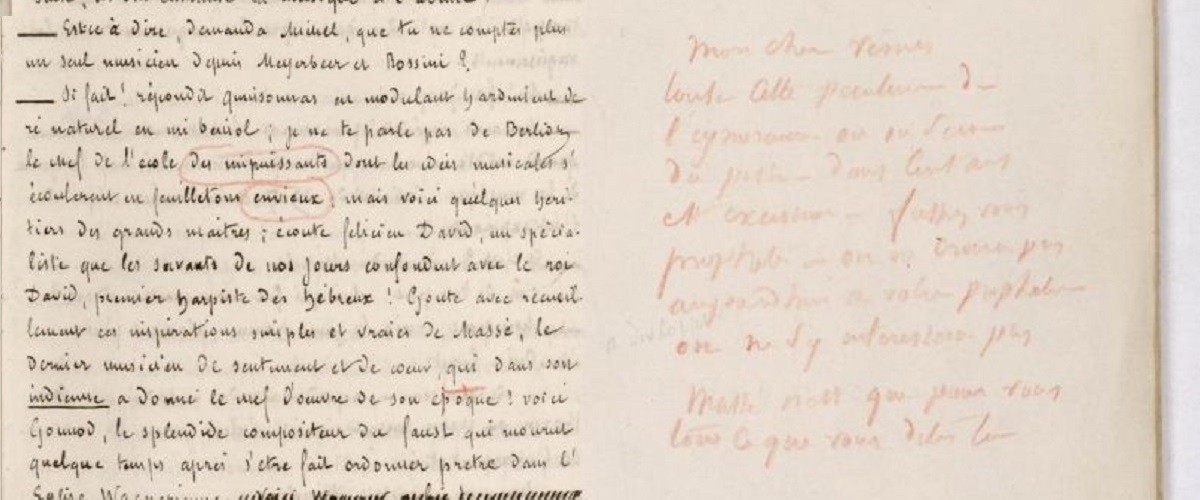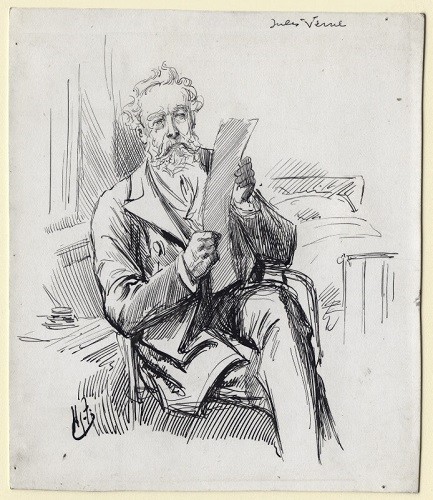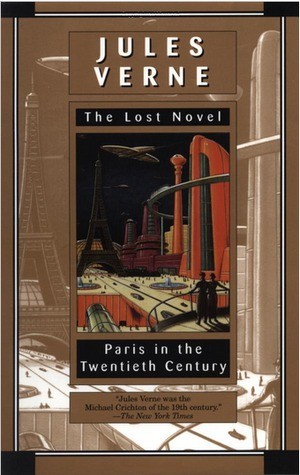








My dear Verne. This entire depiction of the ignorance… of the past in 100 years is excessive. Even if you were a prophet, no one today would believe this prophecy… they simply would not be interested in it.

© National Portrait Gallery, London
The French writer Jules Verne (1828–1905) became a best-selling author in the 1860s, writing a series of adventure novels, which included Journey to the Centre of the Earth (1864). But one such novel was turned down by his editor Pierre-Jules Hetzel in 1863.

© National Portrait Gallery, London
The French writer Jules Verne (1828–1905) became a best-selling author in the 1860s, writing a series of adventure novels, which included Journey to the Centre of the Earth (1864). But one such novel was turned down by his editor Pierre-Jules Hetzel in 1863.
The novel, titled Paris in the Twentieth Century, was set almost a hundred years into Verne’s future, in 1960. Verne depicts a dystopian, mechanised Paris, full of electrical wonders, but life is grim and weaponised. As the year 1961 approaches, the whole of Europe experiences a climate collapse in a winter of unprecedented ferocity, a prolonged cold-snap in which temperatures plummet to -23 degrees celsius.

© National Portrait Gallery, London
The French writer Jules Verne (1828–1905) became a best-selling author in the 1860s, writing a series of adventure novels, which included Journey to the Centre of the Earth (1864). But one such novel was turned down by his editor Pierre-Jules Hetzel in 1863.
The novel, titled Paris in the Twentieth Century, was set almost a hundred years into Verne’s future, in 1960. Verne depicts a dystopian, mechanised Paris, full of electrical wonders, but life is grim and weaponised. As the year 1961 approaches, the whole of Europe experiences a climate collapse in a winter of unprecedented ferocity, a prolonged cold-snap in which temperatures plummet to -23 degrees celsius.
The poor begin to die of cold. Elsewhere in Europe, crops fail, and every country is hit by mass famine. In the final pages of the novel, Verne’s protagonist wanders through a frozen city, witnessing a new, deadly ice age.

Hetzel despised the novel, jotting down many editorial messages in the margin of Verne’s manuscript and also writing Verne a damning letter, denouncing the novel: “It is tabloidish, and the topic is ill-chosen… It does not answer a single question about a possible future, nor offer a critique that hasn’t already been made and remade before.”

Hetzel despised the novel, jotting down many editorial messages in the margin of Verne’s manuscript and also writing Verne a damning letter, denouncing the novel: “It is tabloidish, and the topic is ill-chosen… It does not answer a single question about a possible future, nor offer a critique that hasn’t already been made and remade before.”
Central to Hetzel’s critique is that the futuristic tale is not credible. For Hetzel, climate change of this severity was unimaginable and even chintzy.

History has proven otherwise. Many of Verne’s predictions were remarkably accurate: the novel describes “gas-cabs”, cars run by fossil fuel; the electric chair; and remote controlled weapons systems. What’s more, climate change has entered public consciousness as not only imaginable, but inevitable.

History has proven otherwise. Many of Verne’s predictions were remarkably accurate: the novel describes “gas-cabs”, cars run by fossil fuel; the electric chair; and remote controlled weapons systems. What’s more, climate change has entered public consciousness as not only imaginable, but inevitable.
Paris in the Twentieth Century was finally published in 1994, after it was discovered by his great-grandson, hidden by Verne 126 years earlier, in a safe. Today Verne is considered eminently believable: a prophet of the past, who saw sharply into the future, where technology and industry have not conquered nature. Instead, nature is conquering mankind.
